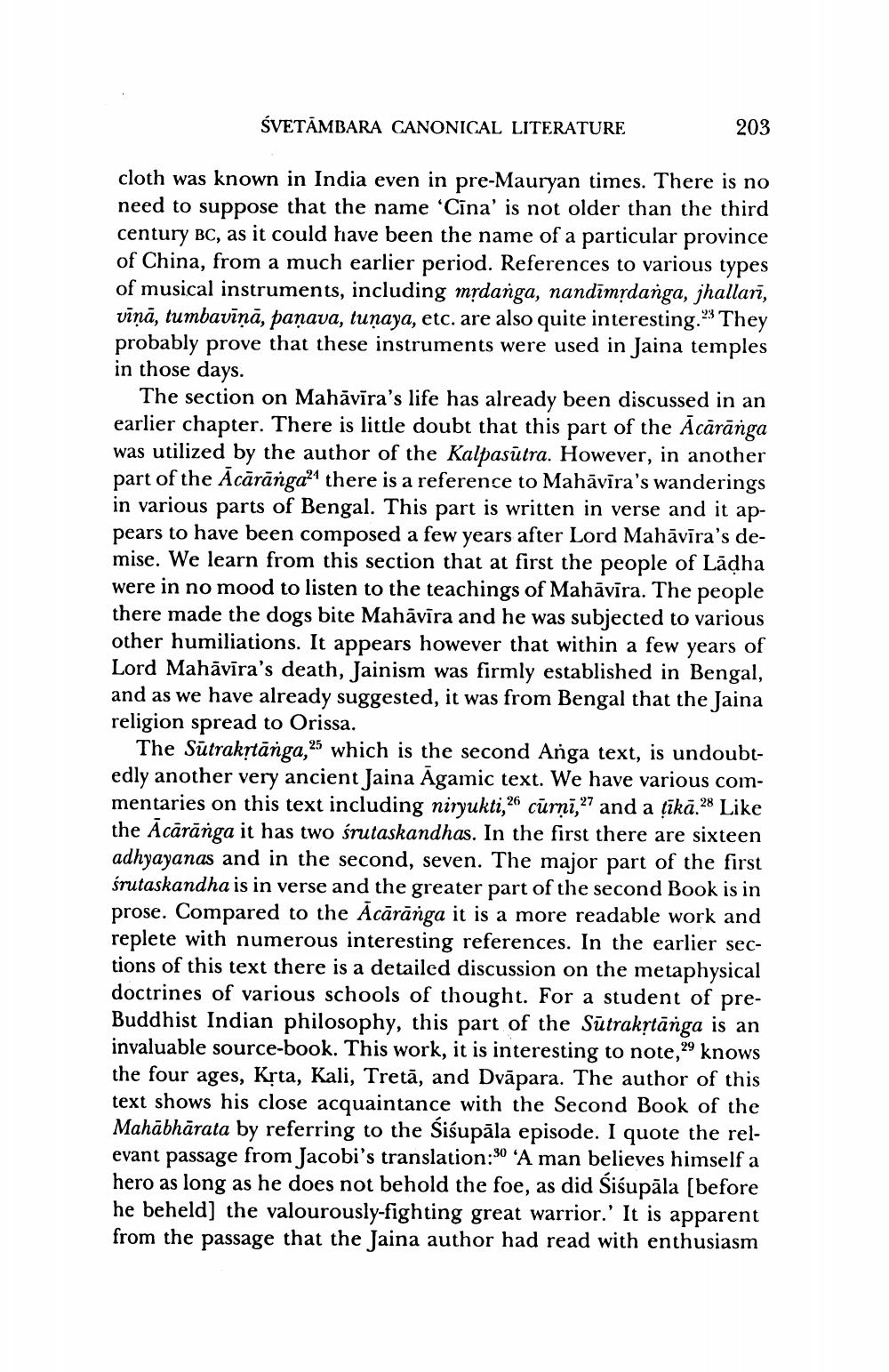________________
SVETAMBARA CANONICAL LITERATURE
cloth was known in India even in pre-Mauryan times. There is no need to suppose that the name 'Cina' is not older than the third century BC, as it could have been the name of a particular province of China, from a much earlier period. References to various types of musical instruments, including mṛdanga, nandimṛdanga, jhallari, vīņā, tumbavīņā, paṇava, tunaya, etc. are also quite interesting." They probably prove that these instruments were used in Jaina temples in those days.
203
The section on Mahāvīra's life has already been discussed in an earlier chapter. There is little doubt that this part of the Acārānga was utilized by the author of the Kalpasūtra. However, in another part of the Acaränga there is a reference to Mahāvīra's wanderings in various parts of Bengal. This part is written in verse and it appears to have been composed a few years after Lord Mahāvīra's demise. We learn from this section that at first the people of Läḍha were in no mood to listen to the teachings of Mahāvīra. The people there made the dogs bite Mahāvīra and he was subjected to various other humiliations. It appears however that within a few years of Lord Mahāvīra's death, Jainism was firmly established in Bengal, and as we have already suggested, it was from Bengal that the Jaina religion spread to Orissa.
The Sutrakṛtānga,25 which is the second Anga text, is undoubtedly another very ancient Jaina Agamic text. We have various commentaries on this text including niryukti,26 curṇī,27 and a ṭīkā.28 Like the Acaranga it has two śrutaskandhas. In the first there are sixteen adhyayanas and in the second, seven. The major part of the first śrutaskandha is in verse and the greater part of the second Book is in prose. Compared to the Acārānga it is a more readable work and replete with numerous interesting references. In the earlier sections of this text there is a detailed discussion on the metaphysical doctrines of various schools of thought. For a student of preBuddhist Indian philosophy, this part of the Sutrakṛtānga is an invaluable source-book. This work, it is interesting to note,29 knows the four ages, Krta, Kali, Treta, and Dvapara. The author of this text shows his close acquaintance with the Second Book of the Mahabharata by referring to the Siśupāla episode. I quote the relevant passage from Jacobi's translation:30 'A man believes himself a hero as long as he does not behold the foe, as did Śiśupāla [before he beheld] the valourously-fighting great warrior.' It is apparent from the passage that the Jaina author had read with enthusiasm




